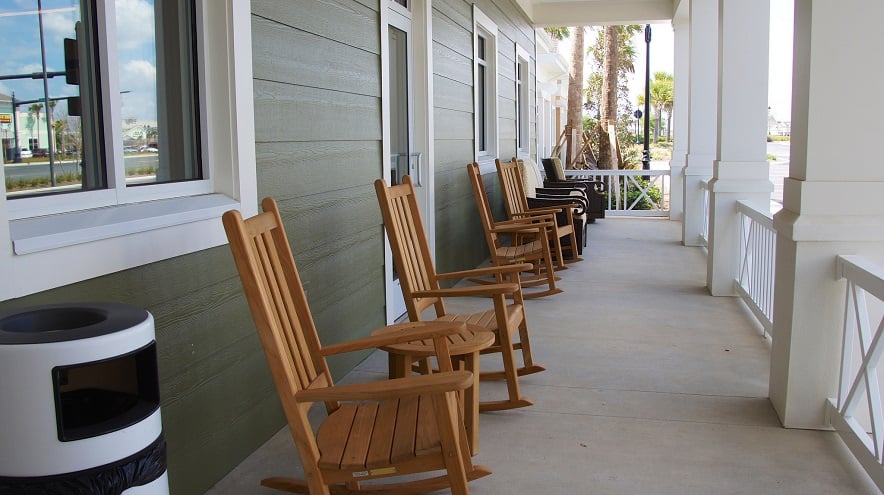Access Control for Healthcare and Nursing Facilities
Access control within the healthcare industry—particularly in hospitals and nursing homes—requires a unique approach, encompassing not only main entrance doors, but also internal entrances and exits based on location and access level. And more than that, these facilities must manage large quantities of data, making data management a critical component of a comprehensive security plan.
Security managers can work to secure these components by seamlessly integrating systems together. For example, various doors and locks can be programmed to activate at specific times and rules can be applied based on time of day, shift changes, specific department access, and more. Healthcare facilities also look for the ability to control access remotely through mobile applications, confirm identity quickly and easily, and program varying levels of access for visitors, patients, doctors, and staff. These facilities also require oversight 24 hours a day, seven days a week, which can be a challenge for security directors.
Similarly, nursing homes require robust access control to protect patients and high-value assets, such as medical equipment and prescription medications, from internal and external theft. Additionally, some nursing home patients require more robust monitoring, meaning that access control points and video surveillance must work together to enable administrators to monitor incoming and outgoing patients, visitors, and staff.
Both kinds of facilities must be careful with sensitive materials, such as narcotics and sterile environments, that require added protection and protocols. Medical files and controlled substances must be protected by electronic access-controlled cabinet locks to provide hospitals and administrators with the required audit trail in case of a breach.
Video surveillance in nursing homes is a critical component of a comprehensive security solution. Its usefulness centers around operational efficiencies such as managing deliveries of important goods, monitoring food preparation, ensuring proper care of patients, and overseeing the constant flow of people coming in and out of a facility. Video also becomes important in the event of an incident for investigative purposes.
Putting it All Together
A large healthcare organization must take the safety and security of patients—and their personal information—seriously. Implementing a security management system (SMS) can integrate a facility's access control technologies, digital video, and alarm monitoring systems into a single, streamlined solution.
Going even further, in many large enterprise organizations, multiple databases can be incorporated into an SMS, including a human resources software program. The result is the ability to streamline data input with the push of a button. For example, when an employee is terminated, access is automatically revoked when an HR manager changes the person's employment from "active" to "inactive." This means the integration of data requires only a single update to control access across the campus.
The need for integration will continue to drive innovation in access control, not only for security systems, but also for human resources, directory software tools, and event management programs. Busy facilities and their administrators require the ability to grant permissions in a way that not only saves time and energy on manual input, but also makes changing permissions easy and efficient.
Also important to a healthcare facility is the protection of personal information from prying eyes and hackers, which means access to records must be heavily protected. In many facilities, biometrics are being used—via iris or fingerprint scanners—to protect important information from would-be hackers. This way, only authorized users have access to the information. Additionally, IT departments within these facilities are working closely with security leaders to ensure that networks are as secure as possible to protect from ransomware attacks, which have plagued the healthcare industry in the last few years.
Locking Down
Lockdown capabilities are paramount within today's healthcare settings, driving access control manufacturers to provide solutions that make it easy for security directors to control access quickly and efficiently in the event of an emergency. End users are also looking for mobility, and having a mobile application to help grant access, freeze access, or change permissions easily is important in this vertical market, along with the ability for security teams and professionals to move freely throughout the facility.
One area where this is critical is in nursing homes. These entities must provide loved ones with the knowledge and peace of mind that their family members are safe while balancing freedom with security. In some instances, patients with dementia or Alzheimer's require additional, around-the-clock care that can be extended to the entrances and exits of a facility. In turn, nursing homes must invest in the ability to lock down a facility to keep patients from exiting without notifying staff, while also providing the welcoming environment that facilities hope to foster. Certain access control systems allow caregivers within a nursing home facility to let visitors in and out with the touch of a button, while keeping at-risk patients from exiting the facility.
Healthcare facilities must provide safety and security for visitors, patients, staff, and assets. The ability to lock down portions of a hospital or an entire facility is crucial to its ongoing operations. Additionally, having a system in place that allows security officials to communicate these rules quickly and efficiently through an easy-to-use interface is key to adhering to the rules and regulations that govern healthcare facilities. Access control is critical to the success of security programs, and being able to integrate with data management platforms can make this task easier than ever before.
Kim Loy is director of Technology and Communications at Vanderbilt Industries.
